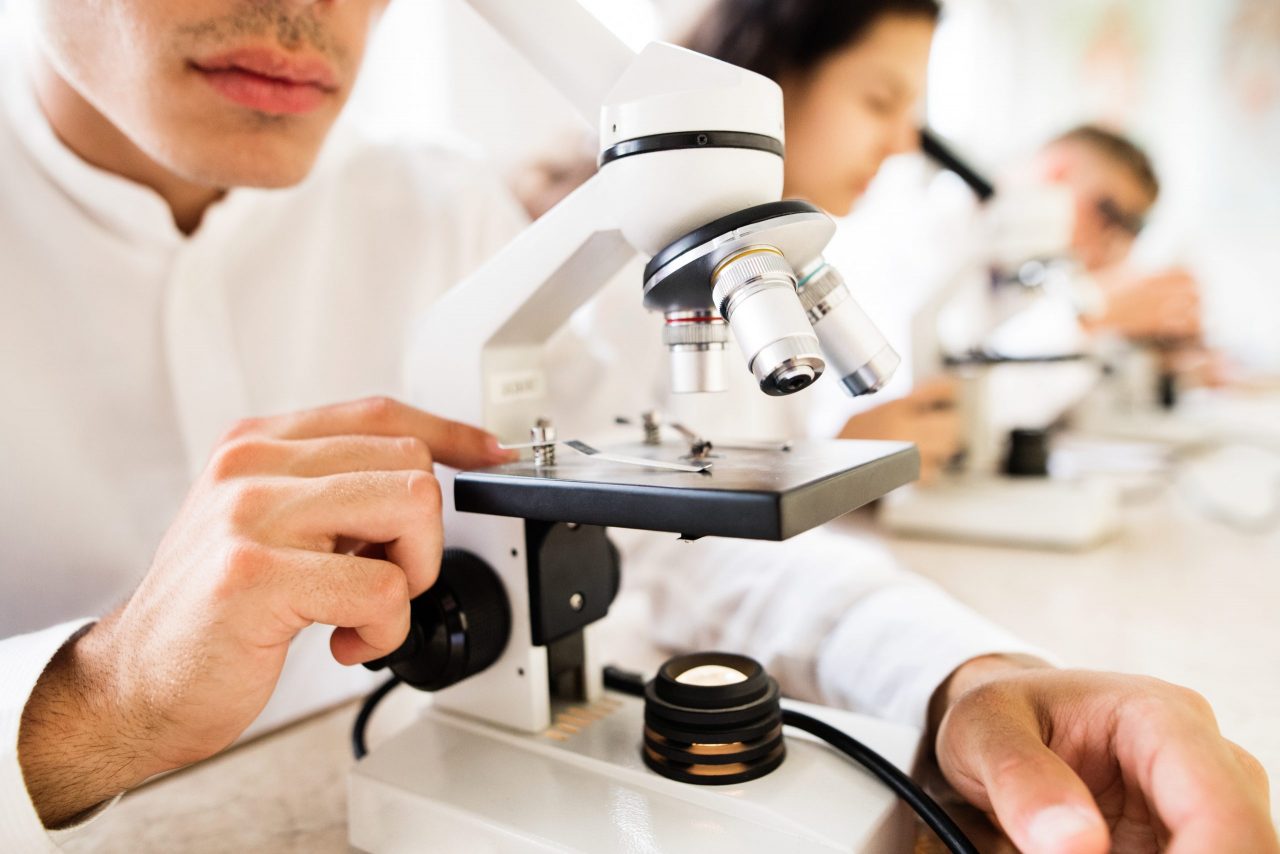Fluorescence microscopy is a special form of light microscopy. It uses the ability of fluorochromes to emit light after being excited with light of a certain wavelength. Proteins of interest can be labeled with such fluorochromes by antibody staining or fluorescent protein labeling. It allows to determine the distribution of a single molecule, its quantity and its location within a cell. Furthermore, colocalization and interaction studies can be carried out, observing ionic concentrations using dyes that bind reversibly, and cellular processes such as endocytosis and exocytosis can be observed. A fluorescence microscope is a conventional light microscope to which a fluorescence adapter is added, which allows optical observation of the sample in both conventional and fluorescent contrast ways.
While a conventional microscope uses visible light, which is between 400 and 700 nanometers to illuminate and magnify the image of a sample, the fluorescence microscope, on the other hand, uses a much higher intensity of light, which excites species fluorescently labeled in the sample.
How do these types of microscope work?
The fluorescence microscope works, first, by labeling the sample of interest with a fluorescent substance, known as a fluorophore, and then being illuminated through the lens with high-energy light. The light will be absorbed by the fluorophore and will cause the emission of light with low energy and a long wavelength. This fluorescent light can be separated from the radiation that surrounds it using filters designed for that specific wavelength, allowing the observer to visualize only what is fluorescent.
The most basic function is to allow the excited light to radiate the specimen, then to separate the weaker light emitted from the image. First, the microscope has a filter that only lets radiation with a specific wavelength pass through that is the same as that of the fluorescent material. The radiation collides with the atoms in the specimen and the electrons are excited to a higher energy level. When they relax to a lower level, they emit light. To be detectable, that is, visible to the human eye, the fluorescence emitted from the sample is separated from the brighter excitation with a second filter. This works thanks to the fact that the light emitted is of lower energy and with a longer wavelength than that used for lighting.
Molecules with a specific fluorophore are used to make a diagnosis, so that when the sample is illuminated, it can be seen in a specific color. For this, specific filters, called excitation filters, are used to select and illuminate the sample with a specific area of the visible spectrum.
What are its main applications?
The applications of fluorescence microscopy are numerous, notably in biology and medicine:
Labeling of molecules in cells and tissues for their characterization and identification.
Study of normal and pathological cells.
Immunological studies.
Mineralogy.
At Kalstein we offer you an excellent range of microscopes, which have the highest quality and technology. That is why we invite you to take a look at the HERE


